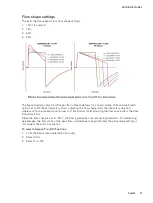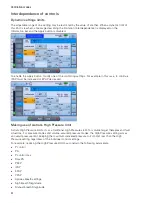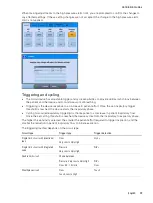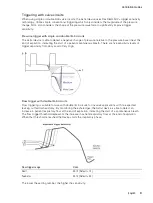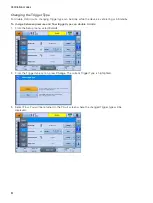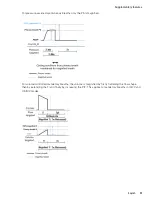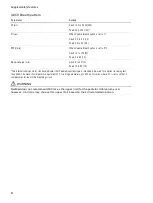
Non-invasive ventilation (NIV)
English 101
Non-invasive ventilation (NIV)
Mask NIV
Mask ventilation is supported by Astral on all circuit types and modes. NIV is commonly associated with
leak, and minimising leak will promote optimal therapy. Astral’s vented (intentional leak) circuit therapies
(CPAP, S, ST, iVAPS, and T modes) possess advanced leak management methods optimised for mask
ventilation. Note however that in situations of highly variable leak, pressure-target therapies (CPAP, S,
ST, T modes) may offer advantage over volume-target or volume-assured pressure modes.
During NIV therapy, peak applied pressures are chosen to address the ventilation needs as well as
patient tolerance, mask leak, and the potential for gastric distention (an adult's lower oesophageal
sphincter pressure is 25-30 cmH
2
O). Various guidelines suggest a typical maximum pressure for mask
NIV of 20-30 cmH
2
O.
Astral features an adjustable High Pressure limit which can be a convenient means of imposing a
maximum pressure during Astral's pressure-target modes (including those with volume-assurance),
regardless of the prevailing PEEP and PS. This is further discussed in Pressure alarms/limits.
Mouthpiece NIV
The decision to use mouthpiece ventilation is generally a consultative process between clinician and
patient after considering the risks and advantages of this form of therapy. For example, the patient must
possess adequate cognition, head/neck/mouth control, and oropharyngeal function, and significant
individualized training may be required compared to other forms of ventilation.
To independently assess the patient condition during mouthpiece ventilation, SpO
2
can be monitored
using a pulse oximeter. Should the oximeter sensor become disconnected from the patient's finger, the
No SpO
2
monitoring
alarm will activate.
CAUTION
Mouthpiece ventilation may not be appropriate for particular patients and hence clinical discretion
is essential.
Mouthpiece ventilation
The settings below are suggested for ‘open’ or ‘sip’ mouthpiece ventilation where the patient exhales to
atmosphere frequently or continuously, eg, for on-demand daytime ventilation via a 15 mm non-vented
mouthpiece. Other circuit types, modes and settings are also available if required.
Ventilation setting
Selection
Detail/ explanation
Patient type
Adult
Circuit
Mouthpiece circuit
(Tube only)
15mm or 22mm circuit without intentional leak or expiratory valve
Note: Not designed to support continuous exhalation into the circuit.
Interface
Mouthpiece
Ventilation mode
(A)CV
(A)CV mode allows the patient to stack breaths as a set volume is delivered
with each breath.
Patient settings
Vt, Trigger, Flow shape Set based on patient comfort and preference.
Resp. Rate
As appropriate
Resp. Rate shall be set appropriately for patients who may rely on the
backup rate. Otherwise, it can be turned Off.
Trigger
Low, Medium, High,
Touch
The Touch trigger setting will allow a breath to be delivered upon
engagement of the mouthpiece. If the patient experiences false triggering
then the trigger sensitivity should be reduced.
Vented (intentional leak) therapies are not recommended for highly discontinuous ventilation such as ‘sip’ mouthpiece
ventilation.
Summary of Contents for Astral 100
Page 1: ...Clinical guide English ...

